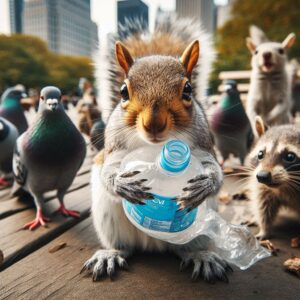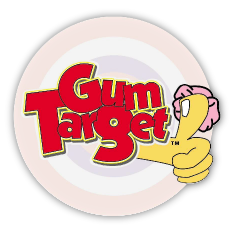Litter has a variety of negative effects on wildlife, such as the consumption of dangerous materials, entrapment, and habitat degradation. Most people fail to see or understand the problems litter causes.
Cats are natural hunters and are often attracted to shiny objects. It’s common for them to mistake small pieces of aluminum foil or plastic for prey. Eating such things could result in serious internal injuries or death. Recently, a cat named Whiskers was discovered in a local park with severe abdominal pain. It turned out that Whiskers had eaten a piece of tinsel left behind after a picnic.
Lured by the bright colors of some things, many birds think they are food. Things like bottle caps and candy wrappers—a little plastic in this world—often make their way into the belly of the bird. Sadly, since plastic cannot be digested, it may build up in large amounts and lead to starvation by literally filling the bird’s stomach with trash. One such case was a dead sparrow found in the area, and when it was dissected, it was discovered to have a belly full of small pieces of plastic.
Foxes are clever scavengers—looking for leftovers, they will raid pillows. Trapping hazards arise with empty food containers and takeaway boxes. Once an animal pokes its head inside for scraps, it might have difficulty getting out again. Unable to move, it may panic and injure itself in the process of escaping. In a suburban area, a case was reported in which a fox stuck its head in a yogurt container. Local wildlife rescuers found the animal and freed it, but was already wounded with several cuts and scrapes from its struggle.
Small mammals like hedgehogs, squirrels, and even mice are among those most seriously harmed by litter. Such creatures are naturally inquisitive. An empty container, like a can or bottle, may appear to be a welcoming place to investigate, but once inside, they usually cannot get back out. A baby squirrel found trapped in a narrow plastic tube had to be painstakingly and very patiently freed by a rescuer. Wildlife groups receive many calls involving just this situation, with small animals stuck in tight places just being too curious.
Litter Types and Their Specific Dangers
Gum is annoying only when it sticks to your shoe. With animals, the danger is very real. Stepping on or ingesting gum can be fatal. Ingestion could result in a life-threatening blockage within the digestive tract. Small animals may even choke on it. A jogger recently found a small hedgehog who was lethargic. A vet discovered that the hedgehog’s digestive tract was blocked—by wad after wad of chewing gum.
 Among the most common types of litter, plastics are also the most dangerous. They do not decompose easily. Instead, they shatter into microplastics, which ultimately find their way into soil and water supplies. Aquatic creatures that ingest these microplastics may suffer from ongoing health problems. Larger plastic items can hurt animals physically, sometimes leading to death by suffocation or entrapment.
Among the most common types of litter, plastics are also the most dangerous. They do not decompose easily. Instead, they shatter into microplastics, which ultimately find their way into soil and water supplies. Aquatic creatures that ingest these microplastics may suffer from ongoing health problems. Larger plastic items can hurt animals physically, sometimes leading to death by suffocation or entrapment.
Aluminum cans, wire, and various metals are common litter artifacts in the urban environment. Wild animals can cut themselves on sharp edges or get ensnared. Some injuries can be quite severe and necessitate immediate medical assistance. One of the stories told involves an owl that became entangled in a piece of wire someone had thrown away. It took rescuers quite a bit of time and energy to get it free and help it.
Another danger is glass bottles and shards. Birds and animals can cut themselves on broken pieces of glass, leading to potentially infected injuries. Limping with glass embedded in their paws is a common scenario for some animals. One case was a domestic dog named Rover who greatly suffered when he stepped on a broken bottle shard during a walk and had to go to the vet and get several stitches.
Mitigating the Risks
Take part in or organize local clean-up events. Teamwork is important within the community to lessen the effects of litter on wildlife. While making the environment cleaner, you’ll also prevent potential harm and death to naïve animals. Schools and community centers can enhance the effort’s educational value.
Abide by this fundamental principle: If you bring it, take it back. Always dispose of waste in the appropriate containers and recycle if you can. Recycle bottles, cans, and food containers only after rinsing them to avoid attracting animals. Make it a habit to separate recyclables from regular trash.
Raise awareness about the effects of litter on wildlife. For the majority of people, seeing the consequences of their actions firsthand will be a revelation. Share stories and information through social media, community bulletin boards, and other outlets. The more people know the more they will care.
Close your garbage bins tightly if you live in an area with wildlife. Secure trash containers are less likely to attract animals. Consider using bungee cords or locks to secure lids. In areas with many tourists, businesses might consider purchasing wildlife-proof bins.
Please throw your chewing gum in the bin. You can wrap it in paper before throwing it away so it does not stick to any surfaces and become a danger. This simple act could save an animal from pain.
Taking Personal Accountability
Big changes come from little things. Using reusable containers, carrying cloth bags, and buying products with less packaging all reduce the chances of something becoming litter. Clean up after yourself and make a point to carry a small bag with you to pick up stray litter you might see, and you’ll make a difference.
When possible, choose biodegradable or eco-friendly products. Items made from organic materials break down faster and are less likely to be harmful to animals. Back brands that use sustainable packaging and minimize waste.
Think about helping wildlife rescue and rehabilitation groups by donating cash or time. Many of these groups work nonstop to assist urban litter–affected animals, thus the support is always welcome. Your act might fund, say, one rescue mission or the rehabilitation of a specific injured animal.



